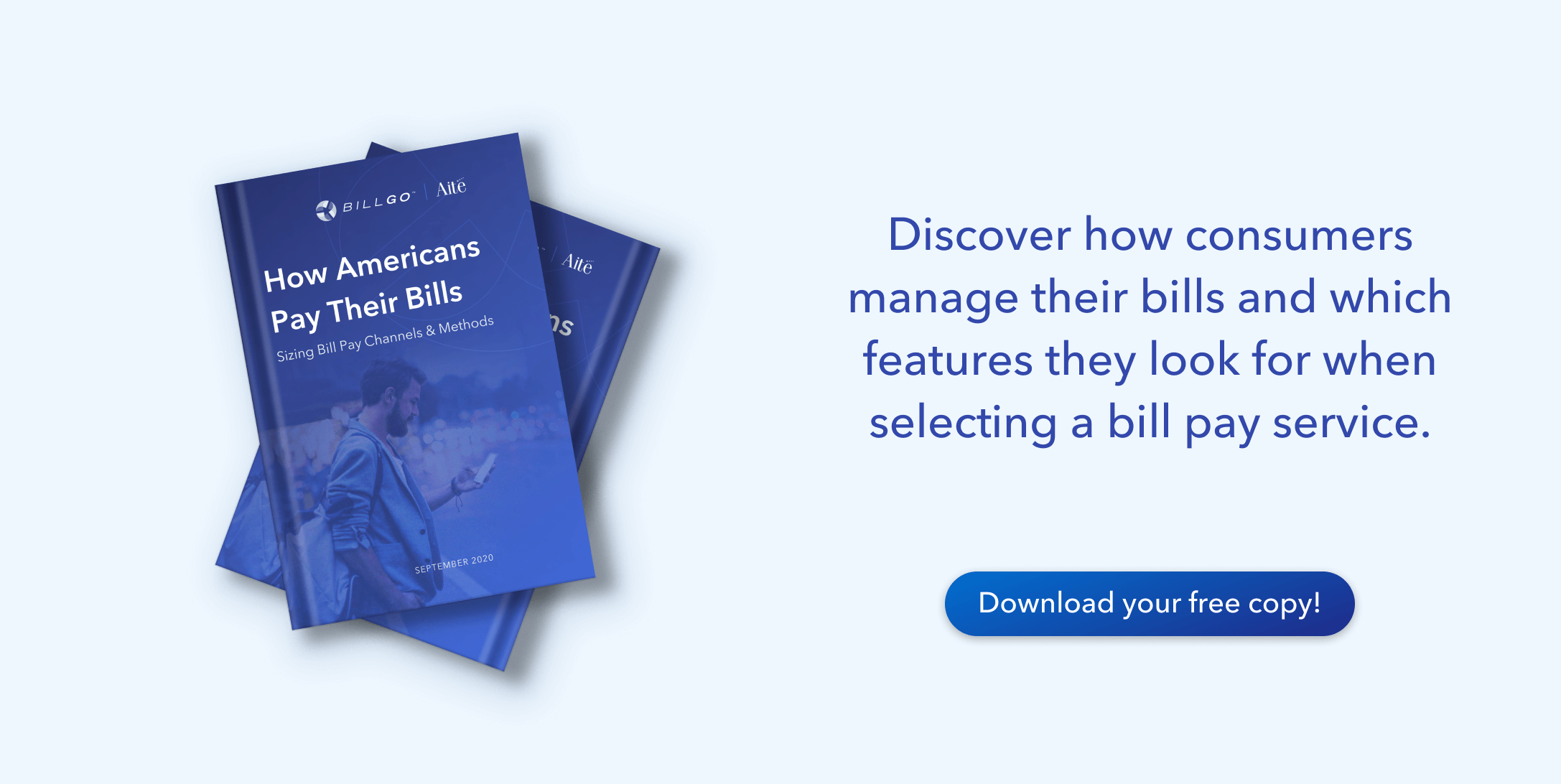Each year U.S. consumers spend almost $5 billion paying their bills.
Yet—despite a decade’s worth of high-tech innovation and apps—when it comes to meeting those financial obligations, a surprising number of Americans still rely on relatively-retro methods of meeting their financial obligations. Last year, for instance, Americans wrote more than 2.3 billion checks and used their debit cards (2.5 billion times) or credit cards (2.6 billion times) to pay their bills.
Why do consumers continue to rely on old-school bill pay methods?
Because, as David Albertazzi, analyst with Aite Group, writes: “Paying bills via the financial institution(FI)-centric bill payment model or the biller-direct model is still a complicated task for consumers and one that is prone to friction.”
Albertazzi shares these in How Americans Pay Their Bills, a comprehensive, national study BillGO commissioned in 2020 from Aite, which Albertazzi co-authored.

The study is a must-read for any digital banking executive wanting to stay current on the latest consumer preferences in payments and bill pay. It offers more than 100 pages of insights into:
- How and when consumers pay their bills
- Which bills get prioritized and which are put on the back burner
- What consumers are looking for in bill pay tech
- Bill pay patterns broken out by Boomers, Millennials, Gen X and Gen Y
- How COVID-19 is impacting the way consumers manage their money
One key trend confirmed in How Americans Pay Their Bills is a decade-long pattern of consumers abandoning FI bill pay platforms in favor of paying billers directly. Seventy-six percent of Americans say they prefer to pay their bills using third-party biller sites (up from 62% in 2010). Only 22 percent of respondents pay their bills using banking platforms (down from 38 percent in 2010).
Albertazzi attributes this to the fact that most bank bill pay platforms are rooted in legacy technology dating back two decades. So, when modern consumers—conditioned by Uber, Amazon, etc.—visit the typical bank bill pay platform, it’s likely they reject 20-year-old technology that lacks a modern interface.
Biller-direct sites, meanwhile, may be more modern, providing consumers with more choice, but, Albertazzi writes, those sites come with their own hassles. “Friction within the biller-direct model includes remembering unique login credentials for each biller or opening up potential security issues as a result of entering bank account numbers or card details on multiple sites,” he writes.
“The market is due for new bill pay solutions to improve the customer experience and to help banks and billers capitalize on better digital consumer experiences and interactions,” says Albertazzi.
Next Steps:
The Aite study, sponsored by BillGO, identifies the channels and methods consumers use when paying bills. It also includes a generational breakdown into how bills are managed as well as insights into how COVID-19 is reshaping bill pay patterns.
Because bank bill pay is foundational to building long-term customer relationships, BillGO invites financial services execs to download a complimentary copy now.


